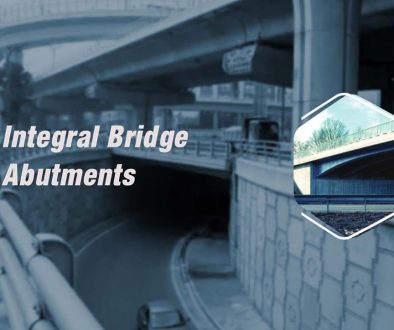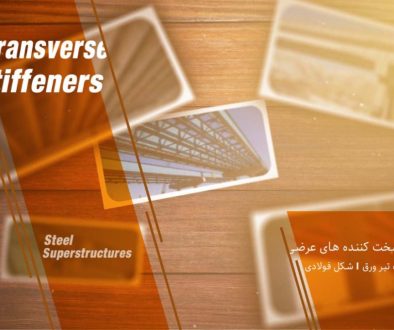Corrugated steel web girder bridge

.
Background Corrugated steel web girder bridge
Corrugated steel plates were first used in the manufacturing of ships, containers, and airfoils. Following that, it began to be used in civil constructions.
The first flat steel plates were corrugated and utilized as webs in bridge girders after being fabricated. By employing corrugated steel webs, the thickness of the web can be reduced and stiffener reinforcement can be omitted, providing financial advantages and extending life.. The construction of corrugated steel web girder bridges started in France and Japan in the 1980s, and interest in and use of them have grown steadily since then.
The first corrugated steel web girder bridge, the Cognac Bridge, had been completed in 1986 in the France. Afterwards this kind of bridge was further applied in France, Norway, Venezuela as well as Japan
This post will discuss the mechanical behavior of prestressed concrete girder bridges with corrugated steel webs.

In a typical arrangement this types of bridges . as shown in Fig. 2, the bridge consists of the top and bottom concrete flanges, which contain internal tendons, the corrugated steel webs, and the external tendon system inside the box together with the deviators or the diaphragms.

Some principal advantages can be obtained and these are summarised as follows:
(a) reduced self-weight about 20–30% in comparison to concrete girder with the same cross-section, resulting in longer span and smaller substructures, thus leading to the reduction of construction cost.
(b) higher shear buckling strength and out-of-plane flexural stiffness for corrugated steel webs in comparison to that for flat steel webs.
(c) owing to the low axial rigidity the so-called ‘accordion effect’ web (accordion effect means that the corrugated web can extend freely in the longitudinal direction) of corrugated steel webs, prestressing can be efficiently introduced into the top and bottom concrete slabs.
(d) In comparison with conventional steel and concrete web, a corrugated steel web can eliminate web stiffeners and construction formworks, respectively , resulting in easier assembly during construction, which improves construction efficiency and shortens the construction time.
(e) the external post-tensioned tendons are easy to replace, offering convenience in bridge maintenance and retrofitting.
(f) the construction materials are used more efficiently because shear and bending forces are resisted optimally by the corrugated steel webs and concrete slabs, respectively
Mechanical behavior
Shear behavior
International researchers have devoted a great deal of time to studying the shear behavior of corrugated steel web girders. through experimental test, numerical simulation and analytical analysis; The investigations declare that corrugated steel webs can resist almost all the shear forces. But in this regard, there are some different points of view. By conducting experiments on a scaled model and finite element analysis of a PC girder with corrugated steel webs, it was found that a concrete slab can carry significant shear and increase the shear resistance of the composite girder with corrugated steel webs. Therefore the characteristics of the shear connector between the corrugated steel web and the concrete flanges may affect the overall shear strength of the PC girders with corrugated steel webs
Shear Buckling Behavior of Corrugated Steel Webs
Because the shear force applied to a prestressed composite section with corrugated steel webs is resisted primarily by the webs, and the stresses in corrugated webs are almost pure shear stresses, This type of bridge’s instability is frequently attributed to shear buckling of corrugated steel webs.
The stability of corrugated steel web can be assured by appropriate design of the form and wavelength of corrugations. Normally the minimum web thickness is determined taking into account the corrugations and the allowable shear stress needed.

There are three types of buckling modes of corrugated steel web
1.Local buckling
2.Global buckling
3.Interactive buckling
A local buckling mode corresponds to the instability of a steel strip simply supported between two folds under uniform shear. It is critical only for deep folds. Its critical stress is determined by the formula of Timoshenko and Gere,
A global buckling mode is critical in webs with shallow folds. The corresponding critical buckling stress can be calculated based on the orthotropic plate buckling theory.
An interactive buckling mode results from the interaction between the local and global buckling modes, and it is also the most difficult buckling mode to predict. Previous research work has shown that the buckling failure of corrugated web is mainly governed by interactive shear buckling
Based on experimental results relating to the shear performance of steel or composite girders with corrugated steel webs inelastic equations predicting the shear stress considering material non-linearity, residual stress and initial geometric imperfections have been provided in the design codes.

Bending behavior
The flexural strength of such girders with a corrugated steel web plate is provided by the flanges thus for a loaded beam the shearing forces are equilibrated by the web and the bending moments are only equilibrated by the longitudinal forces in the slabs, with almost no contribution from the web due to its ‘accordion effect’ . Furthermore, there is no interaction between the flexure and shear behavior of these girders. Thus, the flexural capacity of a steel girder with a corrugated steel web can be based on the flange yield strength.
Torsion behaviour
In comparison to conventional box-girders with concrete webs which have the same cross-section, the torsional rigidity of a box-girder with corrugated steel web plate is reduced ,thus the torsional behavior of such composite structures should be attracting more attention.

Connection behavior
The connection between concrete and steel is an important part of a composite structure. The shear studs, perfobond strip (PBL) connectors and angle shear connectors welded on steel flange or the corrugated steel web directly embedded in concrete slab are generally used for the connections, as shown Fig 5.

Behavior of stiffened and concrete-encased web
In middle- and large-span (main span: 50–150 m) continuous and rigid frame bridges with variable cross-section are the most common structural types applied for composite bridges with corrugated steel webs. The bending and shearing behaviours in a non-prismatic girder with corrugated steel web were analysed according to iso-parametric mapping and experimental data. Additional shear stress was found to be caused by the bending moment, and the axial force should be included in the calculations from the effect of variable cross-sections, which is quite different from that of uniform cross-sections ,especially near the intermediate supports, large shear force and bending moment exist.

In order to prevent shear bucking of corrugated steel webs around these areas, one measure is for concrete to be poured into the area surrounded by the top flange, bottom flange and corrugated steel web near the intermediate support, as shown in Figure 7(a); corrugated steel webs are connected to the concrete encasement with the help of shear studs. The concrete encasement has been proved to enhance the structural bending, shear strengths and buckling resistance of corrugated steel webs Moreover, the shear stiffness of concrete-encased corrugated steel web in the vicinity of the diaphragms is much larger than that of a pure corrugated steel web, so the concrete encasement greatly relieves the interaction between web shear deformation and local bending of concrete slabs
The other method is to use stiffened corrugated steel webs by adopting vertical and/or horizontal stiffeners; the shear performance of stiffened corrugated steel webs has also been verified by experimental and numerical investigations


Fatigue behavior
Subsequently, experimental and numerical investigations of the fatigue behaviour of corrugated web I-girders were extensively conducted it was found that steel corrugated web I-girders had better fatigue performance than conventional steel I-girders, and cracks initiated at the web-to-flange weld toe then propagated into the flange, leading to fracture. For the design of steel I-girders with corrugated web, the category B′ design curve of the AASHTO LRFD specifications is recommended for finite-life fatigue design calculations. In addition, the fatigue performances of composite girders with corrugated steel webs using different types of shear connectors, including studs ,PBLs and embedded connectors, were verified by fatigue tests;
Long-term behavior
The creep behavior and prestressing loss under sustained loads needs to be determined based on model tests and field monitoring. As for the durability performance, the corrosion of corrugated steel webs can be prevented through the use of anti-corrosion coating or high-performance steel.
References
1.Yingbo Zhu and et al 2020 “Modified rotating-angle softened truss model for composite box-girder with corrugated steel webs under pure torsion” Advances in Structural Engineering, DOI: 10.1177/1369433219898063
2.Rui Juan Jiang and et al.2015 “Prestressed Concrete Girder Bridges with Corrugated Steel Webs: Review” Journal of Structural Engineering, © ASCE,
3.Jun He and et al. 2019” The development of composite bridges with corrugated steel webs in China” Institution of Civil Engineers – Bridge Engineering
4.Man Zhou and et al. 2016 “Deformation analysis of a non-prismatic beam with corrugated steel webs in the elastic stage” Thin–Walled Structures 109 (2016) 260–270
5.Ibrahim SA, El-Dakhakhni WW and Elgaaly M (2006a) “Fatigue of corrugated-web plate girders: experimental study”. Journal of Structural Engineering 132(9): 1371–1380.




animierte pornos
جولای 5, 2023 @ 1:35 ق.ظ
Those are just gorgeous. Sheer perfection.
نویسنده
جولای 5, 2023 @ 12:00 ب.ظ
Thank you